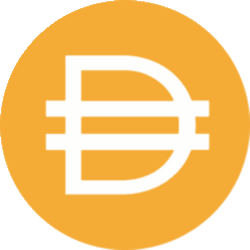- The European Union’s crypto market is poised for significant change with the introduction of the Markets in Crypto Asset Regulations (MiCAR).
- MiCAR aims to harmonize regulations across EU countries, bringing a unified framework, consumer protection, and market integrity.
- Raj Bagadi, Founder and CEO of E Money Network, notes that while beneficial in the long run, the initial implementation will pose challenges for the industry.
Discover the impact of MiCAR on the crypto market, especially on stablecoins, as the EU embarks on regulatory reforms.
MiCAR’s Implementation and Its Immediate Effects
The Markets in Crypto Asset Regulations (MiCAR) are set to create a cohesive regulatory environment across the European Union, replacing a patchwork of national legislation. This unified framework is designed to ensure consumer protection, enhance market integrity, and provide legal clarity for crypto-asset service providers (CASPs). However, the transition presents several challenges. Under the new regulations, diverse classes of crypto assets and service providers must adhere to specific legal requirements to continue their operations within the EU.
Impact on Stablecoins
One of the most affected areas in the crypto sector will be stablecoins, classified under MiCAR as either asset-referenced tokens (ARTs) or e-money tokens (EMTs). For instance, only banks or electronic money institutions (EMIs) can issue e-money tokens, and these must be backed by liquid assets and redeemable at par value. This classification requires stablecoin issuers to meet stringent compliance standards. As a result, major crypto exchanges have started delisting non-compliant stablecoins. From July 1, platforms like Uphold and Binance removed several stablecoins, including USDT, DAI, and TUSD.
Case-by-Case Analysis of Stablecoins
The fate of many established stablecoins in the European market will be determined individually. For example, the algorithmic stablecoin DAI, backed by Ethereum-based assets and pegged to the US dollar, faces compliance issues since its issuer, MakerDAO, lacks legal recognition in the EU. Similarly, Tether’s USDT and EURT are not licensed as EMIs, making regulatory approval unlikely at present. Conversely, Circle’s USDC, backed by the Circle Reserve Fund and several regulatory licenses, including the Financial Conduct Authority E-Money Issuer License in the UK and France’s DASP license, has already secured EMI status under MiCAR.
Adapting to Compliance: A Roadmap for Stablecoin Issuers
Successfully adapting to MiCAR requires significant structural changes for many stablecoin issuers. These organizations will need to maintain 1:1 reserve assets with regulated custodians, ensuring more transparency, improving security, and managing risks effectively. The compliance drive will come with substantial costs, potentially affecting profitability. One notable restriction involves non-euro-denominated stablecoins, such as limiting transactions to 1 million in number or a value exceeding €200 million per day. Non-compliance risks regulatory scrutiny and operational disruptions.
Conclusion
MiCAR’s introduction marks a pivotal point for the EU crypto market, necessitating a significant overhaul of current practices within the industry. While the initial transition phase may cause market disturbances, including reduced liquidity and increased volatility, the long-term benefits include enhanced regulatory clarity, market integrity, and investor confidence. Companies like Circle, having secured necessary licenses, are already setting a precedent for others to follow. By investing in robust compliance infrastructures and ensuring transparent operations, stablecoin issuers can navigate these regulatory waters successfully, leading the way in a more regulated and reliable crypto market.
